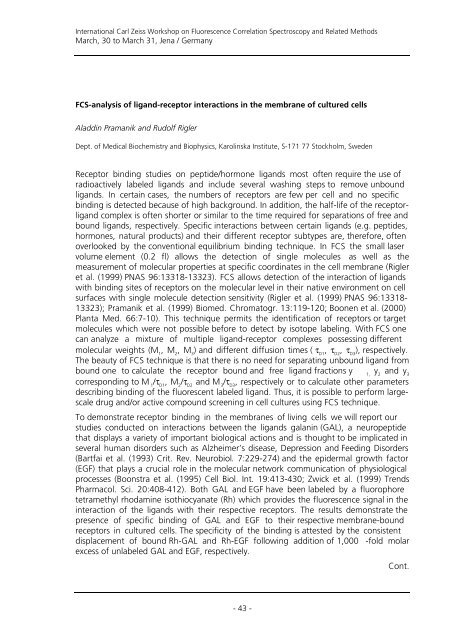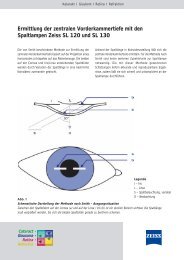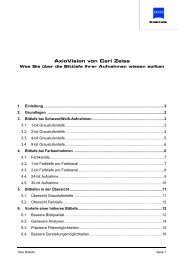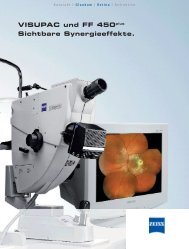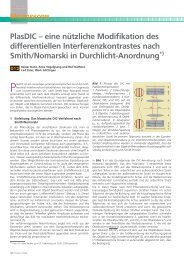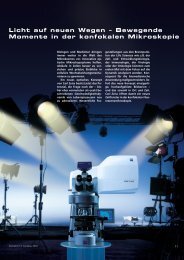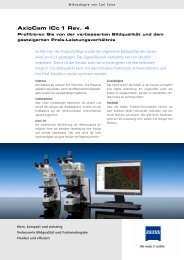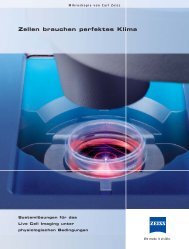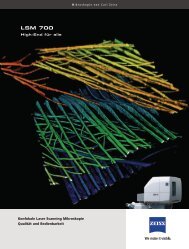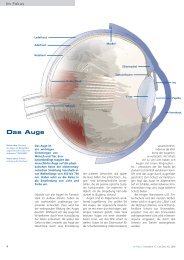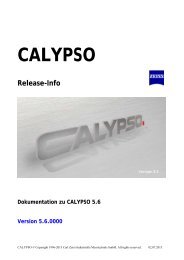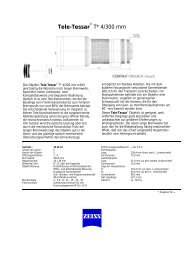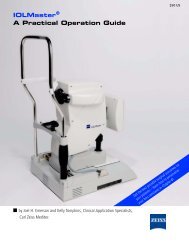International Carl Zeiss Workshop on International Carl Zeiss ...
International Carl Zeiss Workshop on International Carl Zeiss ...
International Carl Zeiss Workshop on International Carl Zeiss ...
Create successful ePaper yourself
Turn your PDF publications into a flip-book with our unique Google optimized e-Paper software.
<str<strong>on</strong>g>Internati<strong>on</strong>al</str<strong>on</strong>g> <str<strong>on</strong>g>Carl</str<strong>on</strong>g> <str<strong>on</strong>g>Zeiss</str<strong>on</strong>g> <str<strong>on</strong>g>Workshop</str<strong>on</strong>g> <strong>on</strong> Fluorescence Correlati<strong>on</strong> Spectroscopy and Related Methods<br />
March, 30 to March 31, Jena / Germany<br />
FCS-analysis of ligand-receptor interacti<strong>on</strong>s in the membrane of cultured cells<br />
Aladdin Pramanik and Rudolf Rigler<br />
Dept. of Medical Biochemistry and Biophysics, Karolinska Institute, S-171 77 Stockholm, Sweden<br />
Receptor binding studies <strong>on</strong> peptide/horm<strong>on</strong>e ligands most often require the use of<br />
radioactively labeled ligands and include several washing steps to remove unbound<br />
ligands. In certain cases, the numbers of receptors are few per cell and no specific<br />
binding is detected because of high background. In additi<strong>on</strong>, the half-life of the receptorligand<br />
complex is often shorter or similar to the time required for separati<strong>on</strong>s of free and<br />
bound ligands, respectively. Specific interacti<strong>on</strong>s between certain ligands (e.g. peptides,<br />
horm<strong>on</strong>es, natural products) and their different receptor subtypes are, therefore, often<br />
overlooked by the c<strong>on</strong>venti<strong>on</strong>al equilibrium binding technique. In FCS the small laser<br />
volume element (0.2 fl) allows the detecti<strong>on</strong> of single molecules as well as the<br />
measurement of molecular properties at specific coordinates in the cell membrane (Rigler<br />
et al. (1999) PNAS 96:13318-13323). FCS allows detecti<strong>on</strong> of the interacti<strong>on</strong> of ligands<br />
with binding sites of receptors <strong>on</strong> the molecular level in their native envir<strong>on</strong>ment <strong>on</strong> cell<br />
surfaces with single molecule detecti<strong>on</strong> sensitivity (Rigler et al. (1999) PNAS 96:13318-<br />
13323); Pramanik et al. (1999) Biomed. Chromatogr. 13:119-120; Bo<strong>on</strong>en et al. (2000)<br />
Planta Med. 66:7-10). This technique permits the identificati<strong>on</strong> of receptors or target<br />
molecules which were not possible before to detect by isotope labeling. With FCS <strong>on</strong>e<br />
can analyze a mixture of multiple ligand-receptor complexes possessing different<br />
molecular weights (M 1<br />
, M 2<br />
, M 3<br />
) and different diffusi<strong>on</strong> times ( τ D1<br />
, τ D2<br />
, τ D3<br />
), respectively.<br />
The beauty of FCS technique is that there is no need for separating unbound ligand from<br />
bound <strong>on</strong>e to calculate the receptor bound and free ligand fracti<strong>on</strong>s y<br />
1,<br />
y 2<br />
and y 3<br />
corresp<strong>on</strong>ding to M 1<br />
/τ D1<br />
, M 2<br />
/τ D2<br />
and M 3<br />
/τ D3<br />
, respectively or to calculate other parameters<br />
describing binding of the fluorescent labeled ligand. Thus, it is possible to perform largescale<br />
drug and/or active compound screening in cell cultures using FCS technique.<br />
To dem<strong>on</strong>strate receptor binding in the membranes of living cells we will report our<br />
studies c<strong>on</strong>ducted <strong>on</strong> interacti<strong>on</strong>s between the ligands galanin (GAL), a neuropeptide<br />
that displays a variety of important biological acti<strong>on</strong>s and is thought to be implicated in<br />
several human disorders such as Alzheimer’s disease, Depressi<strong>on</strong> and Feeding Disorders<br />
(Bartfai et al. (1993) Crit. Rev. Neurobiol. 7:229-274) and the epidermal growth factor<br />
(EGF) that plays a crucial role in the molecular network communicati<strong>on</strong> of physiological<br />
processes (Bo<strong>on</strong>stra et al. (1995) Cell Biol. Int. 19:413-430; Zwick et al. (1999) Trends<br />
Pharmacol. Sci. 20:408-412). Both GAL and EGF have been labeled by a fluorophore<br />
tetramethyl rhodamine isothiocyanate (Rh) which provides the fluorescence signal in the<br />
interacti<strong>on</strong> of the ligands with their respective receptors. The results dem<strong>on</strong>strate the<br />
presence of specific binding of GAL and EGF to their respective membrane-bound<br />
receptors in cultured cells. The specificity of the binding is attested by the c<strong>on</strong>sistent<br />
displacement of bound Rh-GAL and Rh-EGF following additi<strong>on</strong> of 1,000 -fold molar<br />
excess of unlabeled GAL and EGF, respectively.<br />
C<strong>on</strong>t.<br />
- 43 -


